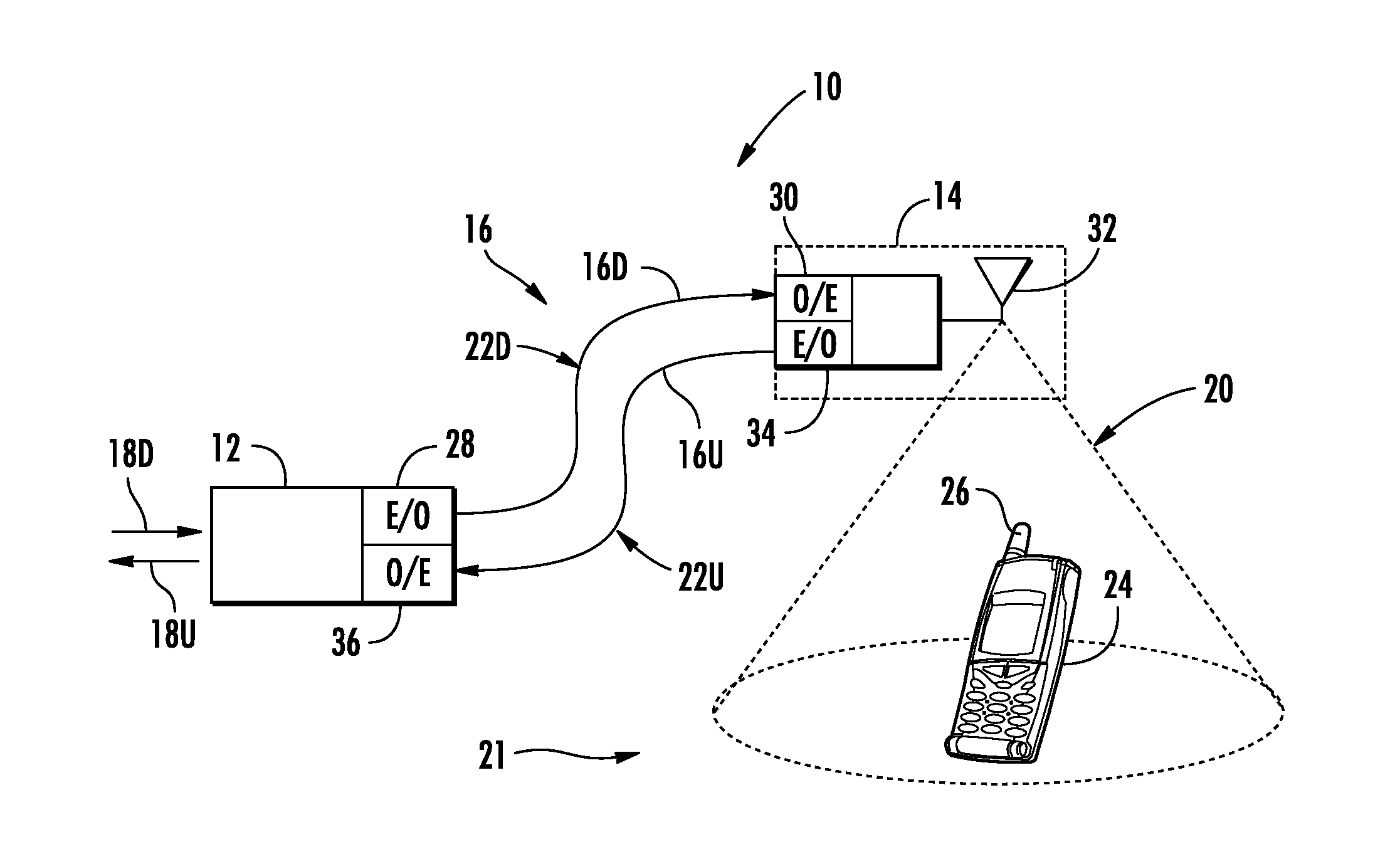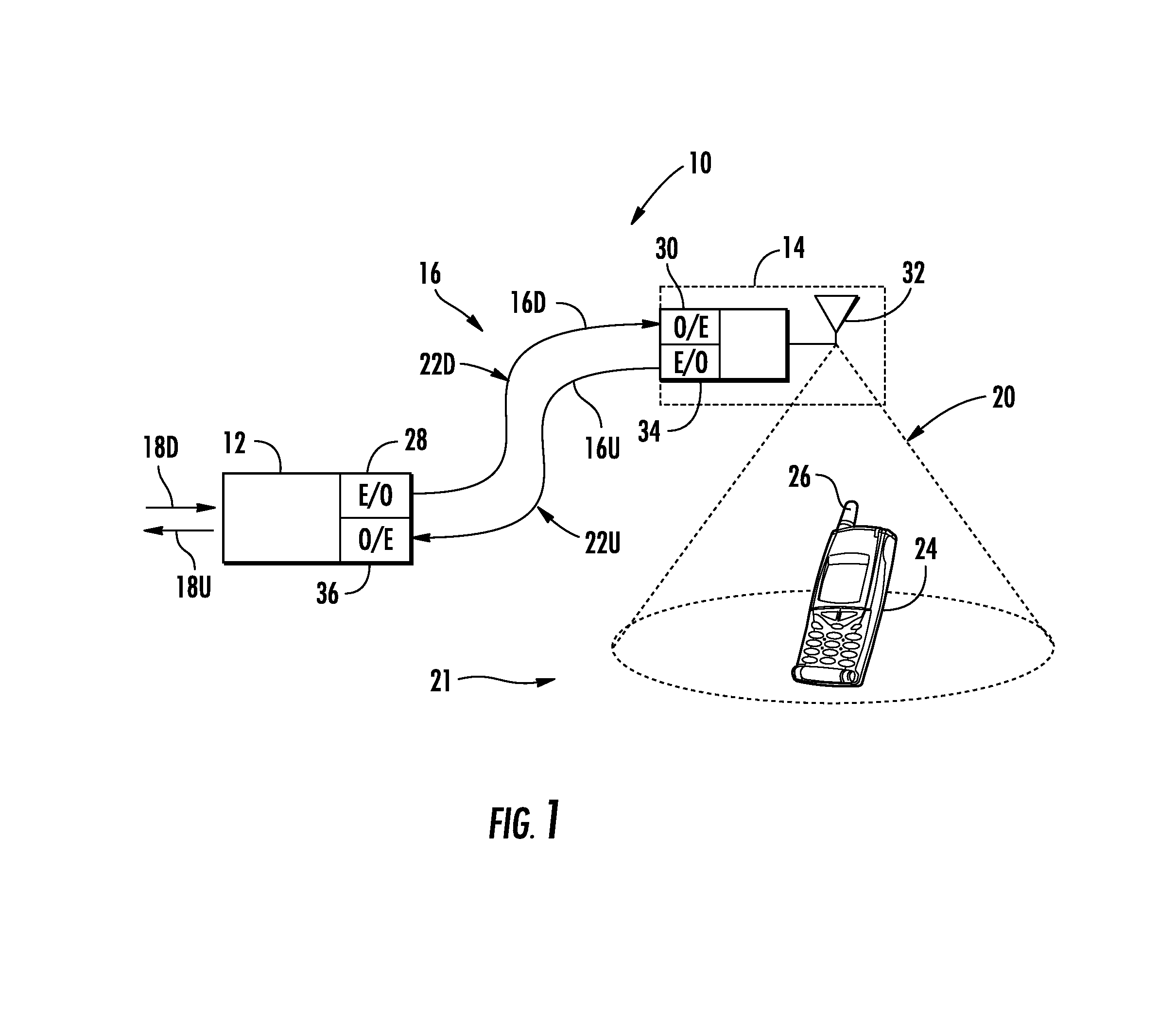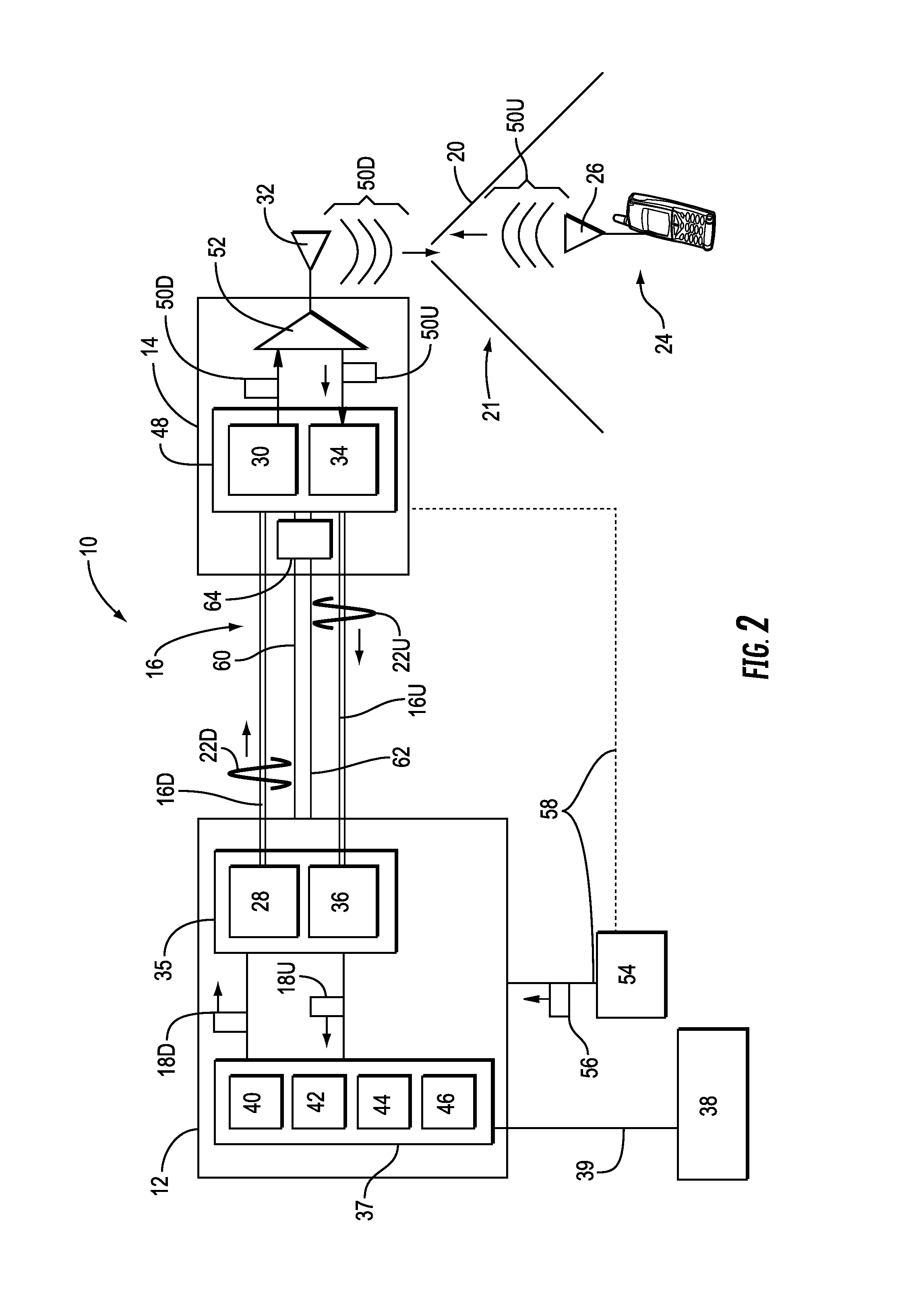Optical fiber-based distributed radio frequency (RF) antenna systems supporting multiple-input, multiple-output (MIMO) configurations, and related components and methods
a distributed radio frequency (rf) antenna and optical fiber technology, applied in the direction of radio-over-fiber, diversity/multi-antenna systems, spatial transmit diversity, etc., can solve the problem that optical fiber-based distributed antenna systems may have limitations on performance (i.e., data rate) based, and achieve the effect of improving data communication rate, improving communication performance, and improving spectral efficiency
- Summary
- Abstract
- Description
- Claims
- Application Information
AI Technical Summary
Benefits of technology
Problems solved by technology
Method used
Image
Examples
Embodiment Construction
[0011]Embodiments disclosed in the detailed description include optical fiber-based distributed antenna systems that support multiple-input, multiple-output (MIMO) antenna configurations and communications. MIMO communications configurations involve the use of multiple antennas at both the transmitter and a receiver to improve communications performance. MIMO can offer significant increases in data communications rates without requiring additional bandwidth or transmit power by higher spectral efficiency (i.e., more data per second per hertz of bandwidth) ad link reliability or diversity to reduce fading. Embodiments disclosed herein also include optical fiber-based distributed antenna system that can be flexibly configured to support or not support MIMO communications configurations. When configured to support MIMO communications configurations, the optical fiber-based distributed antenna systems can be provided that allow for MIMO configurations without consuming additional capaci...
PUM
 Login to View More
Login to View More Abstract
Description
Claims
Application Information
 Login to View More
Login to View More - R&D
- Intellectual Property
- Life Sciences
- Materials
- Tech Scout
- Unparalleled Data Quality
- Higher Quality Content
- 60% Fewer Hallucinations
Browse by: Latest US Patents, China's latest patents, Technical Efficacy Thesaurus, Application Domain, Technology Topic, Popular Technical Reports.
© 2025 PatSnap. All rights reserved.Legal|Privacy policy|Modern Slavery Act Transparency Statement|Sitemap|About US| Contact US: help@patsnap.com



